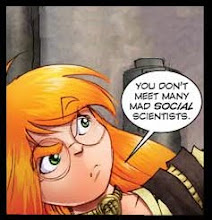Intifada 101 - Preparing for the Aftermath
As one of the world’s few practicing intifadologists, I bear a heavy responsibility. It’s up to me and my colleagues to decide on such things as what phases the Intifada has gone through, and what learned jargon we will use to designate various aspects of the conflict. This is truly an awesome burden, but – for the sake of maintaining an atmosphere of arid objectivity despite our seemingly permanent crisis – it’s one I’m willing to bear.
One of my great accomplishments (or it would have been a great accomplishment if anyone had paid attention) was to designate the correct opening date of Intifada II as 27 September 2000, two days before Ariel Sharon’s famous stroll on Temple Mount. As Palestinian violence had already broken out beforehand, Sharon’s visit – while still seismologically significant – cannot be blamed for the Intifada’s outbreak. (For more detail on this, see An Engineered Tragedy.)
Now, I am faced with a task almost as important, and much more difficult: I must determine when the Intifada will end, or – if it’s already over – when it ended. This is particularly tricky, as conflicts like this don’t end with a surrender or a peace treaty; they tend to taper off until people gradually notice that the conflict is no longer at the forefront of their attention. They don’t even end with peace – at least not in our fascinating little corner of the world – but rather in a return to a sort of low sullen simmer of quasi-normality punctuated by occasional violence. Intifada I ended like this; but since Gulf War I broke out conveniently as that intifada was dying out, the onset of the war – or, more properly, the American entry into the war – is conveniently chosen as marking the end of the intifada. This time, the timing is all wrong: Gulf War II broke out while Intifada II was still going strong, and Intifada II seems to be on its last legs while Gulf War II shows no sign of letting up. Accordingly, I’ve decided – and you’re reading it here for the first time, anywhere! – that barring unforeseen events over the next three weeks or so, the last day of Intifada II will be 26 September 2005 – making the conflict last precisely five years. This is, of course, purely arbitrary; but it makes as much sense as any other date one might choose, as there is no non-arbitrary way of selecting a final date for a conflict that is never really resolved. And I’ve noticed over the last month or two that various Palestinian politicians, terror-group bigwigs, and other luminaries have been threatening that if Israel didn’t do just what they wanted, a Third Intifada would surely break out. If we intifadologists don’t declare Intifada II over before Intifada III begins, we will have a confusing mess on our hands. This would be unacceptable; it’s our job, after all, to ensure that we have only clearly-delineated and well-categorized messes on our hands.
A Post-Intifada Lexicon
In addition to determining the official finish of Intifada II, I am faced (along with my esteemed colleagues) with the challenge of creating appropriate terminology for the post-Intifada-II era. It is theoretically possible, of course, that actual peace will break out. Given the realities on the ground, including last night’s fatal Gaza City “work accident” in which five people were killed – probably not while preparing wedding fireworks – we can safely dismiss this possibility. (The word “safely” here refers, of course, to intellectual rather than mere physical safety.) We are left, then, with several more-or-less realistic aprèsfada scenarii – each with its appropriate designation:
- Palestinians may escalate their level of violence, with their anger turned primarily inwards rather than towards Israel. Such an intrafada may already be underway in the Gaza Strip, as Palestinians protest joblessness, corruption, and so on.
- People on both sides may enjoy a period of relative calm before the next flare-up. Such an entrefada could last until it becomes clear that Intifada III, while not yet underway, is clearly approaching. This next phase, the antefada, could last anywhere from a week to several months. (The previous antefada lasted from the end of the failed Camp David II summit through 26 September 2000.)
- The situation could settle into a state of not-quite-calm, not-quite-open-conflict: an infrafada, during which most Palestinians would go about their normal business until a spectacular terror attack occurred either here or overseas – whereupon we would see an outbreak of schahidenfreude before things calmed down again. (Infrafada, by the way, becomes easier to pronounce with repetition. The feeling of accomplishment is well worth the effort.)
- Palestinians in the Gaza Strip (perhaps along with some of their less-thoroughly-occupied compatriots in parts of the West Bank) may decide that they really preferred to live under Israeli occupation after all, and launch a round of intense contra-nationalist protest – an antifada – to bring the IDF back into their lives. The fact that something appears to be exceedingly unlikely to happen doesn’t mean that we don’t need to have a technical term for it.
I suggest that you practice using this new vocabulary; when whatever happens next happens and the appropriate neologism trips learnedly off your tongue, you’ll thank me for it.





0 Comments:
Post a Comment
<< Home